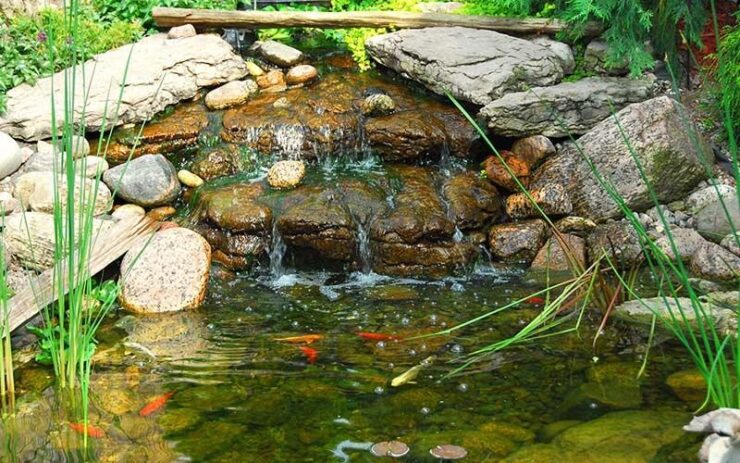A murky, green pond is a nightmare for any pond owner. One day, everything looks perfect, and the next, it’s an overgrown swamp. No one wants a slimy disaster in their backyard. The good news? There are ways to keep everything looking pristine without turning into a full-time maintenance worker.
Key Points:
- Keep nutrient levels low to prevent green takeover.
- Aeration is the best friend your pond never knew it needed.
- Fish play a role but can also be part of the problem.
- Shade and proper placement reduce unwanted growth.
- Use natural and chemical treatments wisely.
- Regular maintenance saves headaches later.
Call in a Pond Specialist for Expert Help
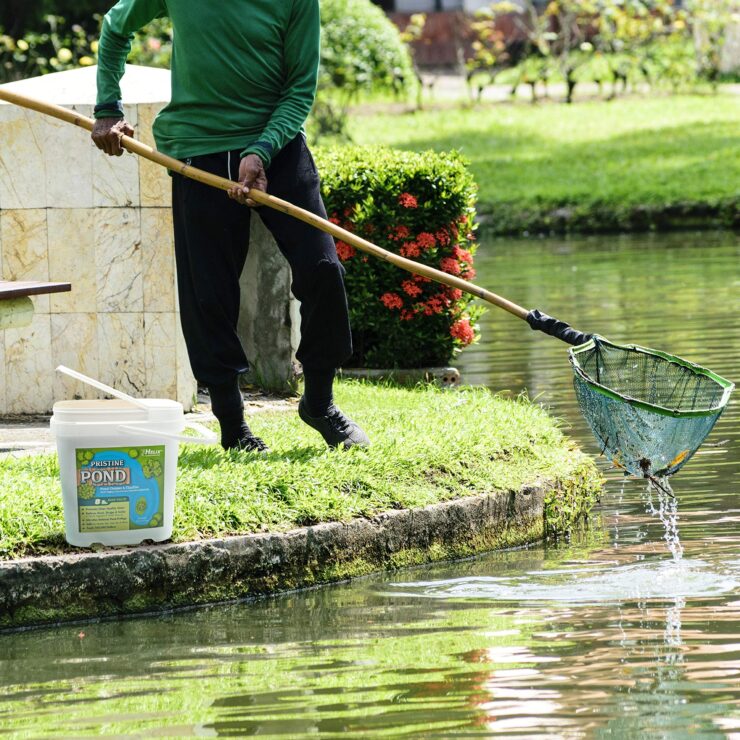
Not everyone has time to deal with murky water or constant upkeep. That’s where a pond specialist comes in handy. Whether it’s cleaning, maintenance, or custom construction, an expert like That Pond Guy can help. Matt Adlington has been leading the charge in Kent and London, offering professional services to keep everything fresh and healthy. With over 400 five-star reviews, it’s safe to say he knows his stuff.
Reduce Nutrient Overload Before Algae Takes Over
Too many nutrients in the system cause chaos. Excess fish food, decaying leaves, and fish waste all contribute to the mess. The best way to prevent this problem is to control what goes into the system. Overfeeding fish adds unnecessary organic material, while dead leaves decompose and release excess nutrients.
Using a skimmer or net to remove debris before it settles can help prevent build-up. Additionally, introducing beneficial bacteria will break down organic waste at a microscopic level, keeping everything balanced.
Aeration Stops Stagnation and Keeps Water Healthy
Moving water is happy water. Stagnant pools turn into breeding grounds for unwanted growth. Proper aeration prevents issues by keeping oxygen levels high and promoting a healthy ecosystem.
- Fountains: Add beauty while keeping oxygen levels up.
- Air Pumps: Circulate and improve overall health.
- Waterfalls: Natural aeration that doubles as a feature.
Fish appreciate the extra oxygen, and unwanted organisms hate it. A win-win situation.
Fish Are Helpers and Trouble-Makers at the Same Time
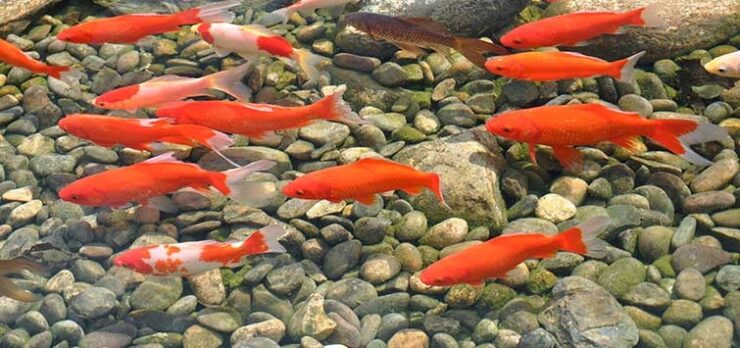
Stocking the right number of fish is critical. Too many, and they contribute to waste buildup.
Too few, and they won’t eat excess plant material.
Ideal fish choices include koi and goldfish, which are beautiful but require balance in numbers.
Grass carp work as a natural cleanup crew, eating plant matter before it takes over.
Plecos help keep surfaces clean, reducing buildup that encourages murky conditions.
Finding the right combination prevents an overpopulated system.
Plants Can Be Your Best Ally or Worst Enemy
The right plants help keep the environment stable, but too many can choke the ecosystem. Floating plants like lilies block excess sunlight, which helps keep unwanted growth in check. Oxygenators like anacharis absorb nutrients that would otherwise fuel unwanted green slime. Marginal plants provide stability, absorbing excess nutrients from the edges.
Pro Tip: A variety of plant species works best. Some absorb nutrients, while others provide shade, making a balanced approach ideal.
Shade Helps Control Overgrowth and Keeps Temperatures Down
Direct sunlight fuels unwanted growth. A few shading techniques work well:
- Floating Plants: Lilies or water lettuce create natural cover.
- Artificial Covers: Shade sails or strategically placed rocks.
- Tree Placement: Provides seasonal coverage but avoid heavy leaf drop.
Reducing exposure to direct sunlight keeps temperatures stable and prevents nutrient imbalances.
Beneficial Bacteria Work Behind the Scenes
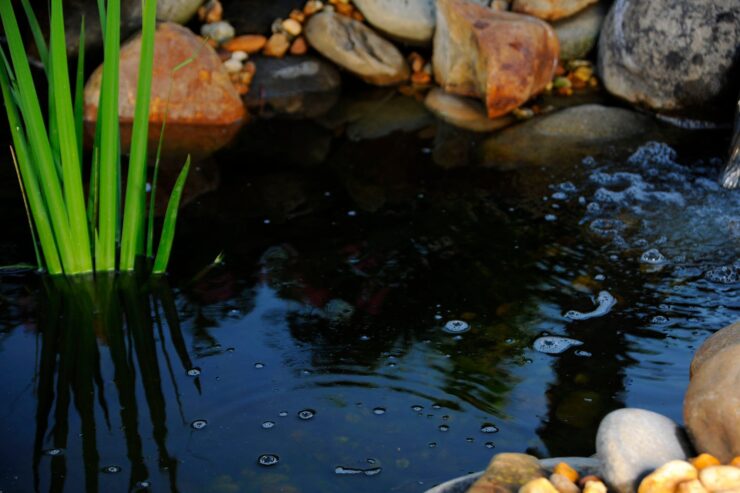
Think of beneficial bacteria as an invisible cleaning crew. They break down organic waste before it turns into sludge. The best way to introduce them is through high-quality bacterial treatments, which help maintain balance without harmful chemicals. Natural additives also work well, ensuring steady biological filtration.
Chemical Treatments Are a Last Resort
Sometimes, nothing else works, and a chemical solution is needed. However, chemicals should never be the first option. They can disrupt the delicate balance of the ecosystem and harm fish or beneficial bacteria.
Best practices for chemical use:
- Apply only as directed—overuse harms fish and plants.
- Choose treatments that target the issue without disturbing balance.
- Combine chemicals with long-term prevention strategies.
A quick fix won’t replace ongoing maintenance.
Filters Are the Workhorses of a Healthy Pond
A good filter system removes debris, waste, and other contaminants.
Three main types to consider:
- Mechanical Filters: Trap large particles.
- Biological Filters: Use bacteria to break down waste.
- UV Clarifiers: Target microscopic issues.
Regular cleaning keeps them functioning at full capacity.
A Good Cleaning Schedule Prevents Bigger Problems
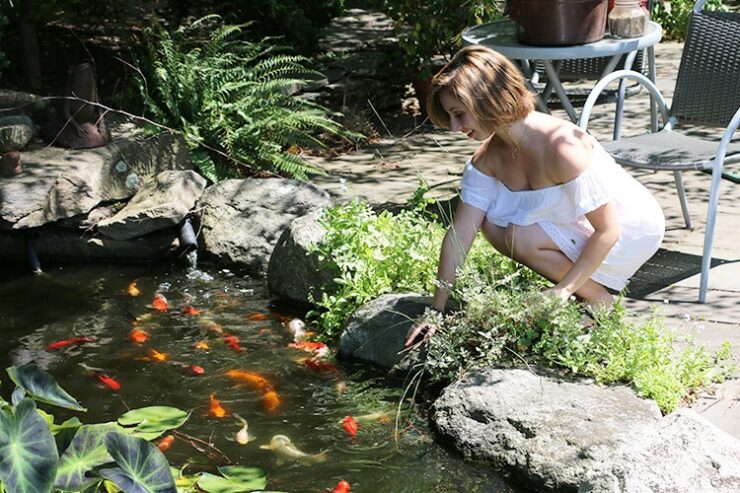
No one enjoys constant upkeep, but skipping maintenance leads to disaster. Sticking to a simple routine makes everything easier.
Recommended schedule:
- Weekly: Skim debris and check fish health.
- Monthly: Clean filters and test nutrient levels.
- Seasonally: Deep clean and adjust plant growth.
Regular cleaning and consistency saves time and prevents bigger issues later.
Natural Predators Keep the Balance in Check
Nature has built-in solutions for controlling unwanted growth. Encouraging beneficial wildlife can help:
- Frogs and tadpoles feed on excess plant material.
- Dragonflies eat insect larvae that thrive in murky environments.
- Birds help control insects around the area.
Creating a balanced ecosystem helps reduce maintenance efforts.
Why Oxygen Levels Matter More Than You Think
Oxygen levels impact everything. Fish need oxygen, bacteria need oxygen, and a low-oxygen environment quickly turns into a smelly disaster. Aeration and proper plant balance ensure everything stays in check.
Fun Fact: Water holds less oxygen in warmer temperatures. That’s why fish become sluggish in the summer—they’re literally gasping for air!
A Well-Planned Layout Prevents Problems Before They Start
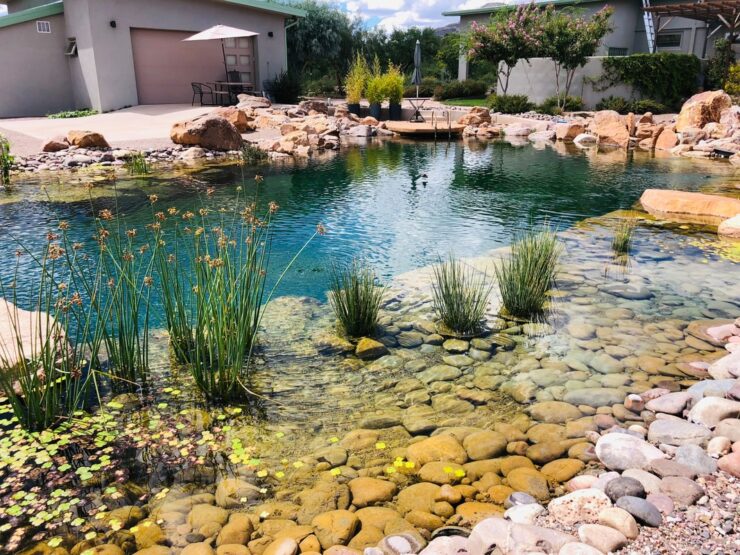
Good placement and design prevent issues before they happen. A few smart planning tips:
- Avoid low spots where runoff collects excess nutrients.
- Use natural barriers to control organic material buildup.
- Ensure proper depth to maintain stable conditions.
A well-thought-out setup leads to less hassle down the road.
Conclusion
A crystal-clear pond doesn’t happen by accident. Balanced fish numbers, proper aeration, and smart plant choices go a long way. Regular maintenance keeps everything looking perfect without excessive effort. By using natural solutions, controlling nutrients, and calling in a pond specialist when needed, keeping everything in top shape becomes simple. A little effort now prevents a swampy disaster later.

